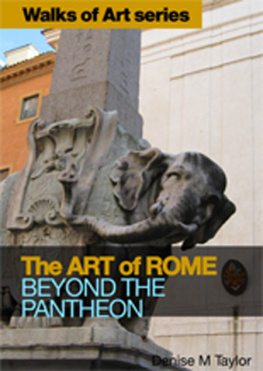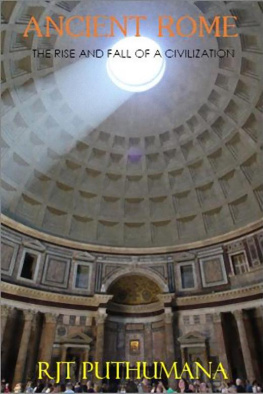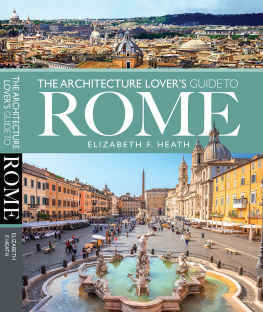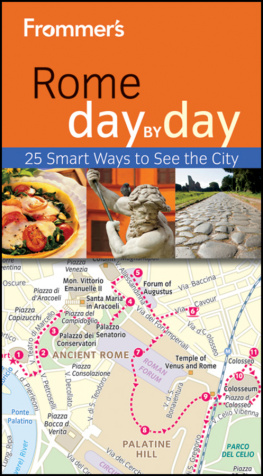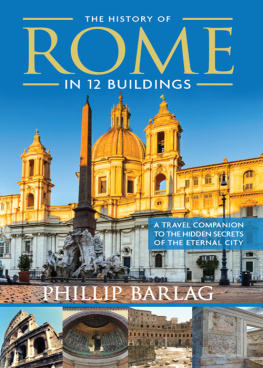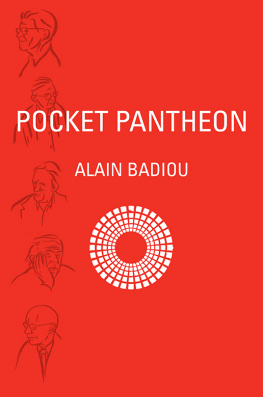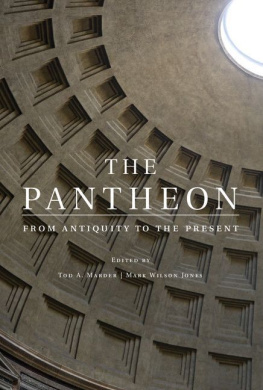Denise M. Taylor - The Art of Rome: Beyond the Pantheon; Walks of Art Series, No. 2
Here you can read online Denise M. Taylor - The Art of Rome: Beyond the Pantheon; Walks of Art Series, No. 2 full text of the book (entire story) in english for free. Download pdf and epub, get meaning, cover and reviews about this ebook. year: 2013, publisher: Palmer Higgs, genre: Home and family. Description of the work, (preface) as well as reviews are available. Best literature library LitArk.com created for fans of good reading and offers a wide selection of genres:
Romance novel
Science fiction
Adventure
Detective
Science
History
Home and family
Prose
Art
Politics
Computer
Non-fiction
Religion
Business
Children
Humor
Choose a favorite category and find really read worthwhile books. Enjoy immersion in the world of imagination, feel the emotions of the characters or learn something new for yourself, make an fascinating discovery.
- Book:The Art of Rome: Beyond the Pantheon; Walks of Art Series, No. 2
- Author:
- Publisher:Palmer Higgs
- Genre:
- Year:2013
- Rating:4 / 5
- Favourites:Add to favourites
- Your mark:
The Art of Rome: Beyond the Pantheon; Walks of Art Series, No. 2: summary, description and annotation
We offer to read an annotation, description, summary or preface (depends on what the author of the book "The Art of Rome: Beyond the Pantheon; Walks of Art Series, No. 2" wrote himself). If you haven't found the necessary information about the book — write in the comments, we will try to find it.
The ancient temple of the Pantheon is the heart of Rome. This self-guided walking tour explores the area just beyond the Pantheon and focusses on art and architecture ranging from antiquity through to the seventeenth century. You will be able to view art in the form of sculpture, painting and architecture by simply looking at a faade, or by engaging with public spaces, or by walking into a churchin situ, intrinsically linked to that place, and therefore adding meaning. A few paces behind the Pantheon is a stone elephant with a distinctive personality, and one of the many works of art by sixteenth-century Baroque artist, Gianlorenzo Bernini, seen throughout this walk. The delightful mix of art works inside S. Maria sopra Minerva belies its austere faade. Close by this Dominican stronghold are two Jesuit churches: both orders were powerful forces in the Roman Catholic Counter-Reformation that began with the Council of Trent (1545-1563) and ended in the mid-seventeenth century. Jesuit artists produced art that aimed to inspire devotion in the faithful and non-believers as a means of fighting against Lutheran heresy. As such, much of Romes religious Baroque art was propaganda, aimed at reviving Catholicisms dominance. The seventeenth-century illusionistic ceiling paintings that you will encounter in the Jesuit churches, Il Gesu and S. Ignazio, are prime examples.
In art historical terms baroque has come to signify the dominant artistic style of the seventeenth century which originated in Rome in the early 1600s and endured until the end of the century. Much of Baroque painting and sculpture is characterised by drama, natural realism and emotional expressiveness.
The increase in tourism en-masse is gradually destroying the individual travellers ability to engage directly (and quietly) with the history and magnificence of works of art in ancient cities such as Rome. In this walk you can avoid the hefty entrance fees to galleries and museums, and the jostling of crowds. So be prepared to inhale the atmosphere and linger along the route as long as you like.
Denise M. Taylor: author's other books
Who wrote The Art of Rome: Beyond the Pantheon; Walks of Art Series, No. 2? Find out the surname, the name of the author of the book and a list of all author's works by series.

